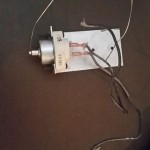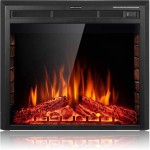Gas Fireplace Remodel: Enhancing Home Aesthetics and Efficiency
A gas fireplace remodel represents a significant opportunity to upgrade a home's visual appeal and operational efficiency. Unlike wood-burning fireplaces, gas fireplaces offer convenience and consistent heating, but their aesthetics and performance can sometimes fall short of expectations or become outdated over time. Remodeling allows homeowners to transform a functional fixture into a focal point of their living space, aligning with their personal style and improving energy efficiency.
The scope of a gas fireplace remodel can range from superficial cosmetic changes to comprehensive overhauls, involving structural alterations and mechanical upgrades. Careful planning and execution are crucial to ensuring a successful project that meets both aesthetic and functional objectives. Understanding the various stages of the remodeling process, from initial design to final installation, is essential for homeowners seeking to improve their fireplace's value and performance.
Defining the Project Scope and Setting a Budget
The initial step in a gas fireplace remodel involves defining the project's scope. This encompasses determining the extent of the changes to be made, including whether the project will involve simple cosmetic updates, such as refacing the fireplace surround, or more extensive modifications, such as altering the firebox or gas line. A clear understanding of the desired outcome is paramount for establishing a realistic budget and timeline.
Budgeting for a gas fireplace remodel requires consideration of several factors. Material costs, including the fireplace surround, mantle, hearth, and any decorative elements, represent a significant portion of the overall expense. Labor costs for professional installation, gas line modifications, and any necessary structural work should also be factored in. Permits, which may be required for certain types of alterations, can add to the total cost. It is prudent to obtain multiple quotes from qualified contractors to ensure competitive pricing and avoid unexpected expenses.
Beyond the basic costs, homeowners should also consider potential long-term savings associated with a more efficient gas fireplace. Upgrading to a newer model with higher energy efficiency ratings can reduce heating costs over time. Additionally, a well-designed and properly installed fireplace can increase a home's overall value, making the remodeling project a worthwhile investment.
Furthermore, contingency funds should be included in the budget to account for unforeseen issues that may arise during the remodeling process. These could include unexpected structural repairs, gas line complications, or the discovery of outdated or non-compliant components. A buffer of 10-15% of the total budget is generally recommended to cover such contingencies.
Exploring Design Options and Material Selection
The design phase of a gas fireplace remodel offers a diverse range of options to align with individual aesthetic preferences and complement the home's overall décor. The fireplace surround, mantle, and hearth are key elements that contribute to the fireplace's visual impact. These can be customized using various materials, colors, and textures to create a unique and personalized design.
Common fireplace surround materials include brick, stone, tile, and wood. Brick offers a classic and traditional look, while stone provides a more rustic and natural aesthetic. Tile allows for intricate designs and patterns, offering a wide range of color and texture options. Wood surrounds can be stained or painted to match existing trim and cabinetry, creating a cohesive and integrated look.
The mantle serves as a focal point above the fireplace, providing a space for displaying decorative items and personal mementos. Mantles can be constructed from wood, stone, or metal, and their design can range from simple and minimalist to ornate and elaborate. The choice of mantle material and style should complement the fireplace surround and the overall design aesthetic.
The hearth, which is the area in front of the fireplace opening, provides a safety barrier and adds to the fireplace's visual appeal. Hearth materials typically include stone, tile, or brick, and the size and shape of the hearth can be customized to fit the fireplace and the surrounding space. Considerations for the hearth include its height, width, and depth, as well as its material and texture.
In addition to the surround, mantle, and hearth, other decorative elements can be incorporated into the fireplace design, such as decorative logs, glass beads, or river rocks. These elements add visual interest to the firebox and enhance the overall ambiance of the fireplace. The selection of these decorative elements should be carefully considered to ensure they complement the other design features.
Homeowners should also consider the lighting surrounding the fireplace. Recessed lighting, sconces, or accent lighting can be used to highlight the fireplace and create a warm and inviting atmosphere. The placement and intensity of the lighting should be carefully planned to enhance the fireplace's visual impact without detracting from its functionality.
Ensuring Proper Ventilation and Safety Compliance
Proper ventilation is a critical aspect of gas fireplace installation and remodeling. Gas fireplaces require a properly functioning venting system to safely exhaust combustion byproducts, such as carbon monoxide, outside the home. Inadequate ventilation can lead to health hazards and pose a fire risk.
There are two primary types of gas fireplace venting systems: direct vent and B-vent. Direct vent systems draw combustion air from outside the home and exhaust combustion byproducts directly outside, eliminating the need for a chimney. B-vent systems utilize a chimney to vent combustion byproducts, but they also draw combustion air from inside the home. The choice of venting system depends on the fireplace model, the home's existing structure, and local building codes.
When remodeling a gas fireplace, it is essential to ensure that the existing venting system is in good working order and meets current safety standards. A qualified HVAC technician should inspect the venting system to identify any potential issues, such as leaks, blockages, or corrosion. If the existing venting system is inadequate or outdated, it may need to be repaired or replaced.
Gas lines and connections must also be inspected for leaks and proper installation. A qualified gas technician should conduct a pressure test to ensure that the gas line is free from leaks. All gas connections should be properly tightened and sealed to prevent gas leaks. Carbon monoxide detectors should be installed near the fireplace to provide early warning of any potential carbon monoxide buildup.
Local building codes and regulations governing gas fireplace installation and remodeling must be adhered to. Permits may be required for certain types of alterations, such as gas line modifications or structural changes. It is the homeowner's responsibility to ensure that all work is performed in compliance with applicable codes and regulations. Failure to comply with building codes can result in fines, delays, and potential safety hazards.
Moreover, homeowners should understand the importance of regularly scheduled maintenance for their gas fireplace. This includes cleaning the burner assembly, inspecting the venting system, and checking the gas line connections. Regular maintenance helps to ensure the safe and efficient operation of the fireplace and prevent potential problems from developing.
During the remodel process, it is recommended to hire licensed and insured contractors. This ensures that the work is performed by qualified professionals who adhere to safety standards and building codes. A reputable contractor will provide a detailed estimate, obtain necessary permits, and guarantee their work.
In conclusion, a gas fireplace remodel can significantly enhance a home's aesthetics and efficiency. By carefully defining the project scope, exploring design options, and ensuring proper ventilation and safety compliance, homeowners can transform their fireplace into a beautiful and functional focal point of their living space. Furthermore, the investment in a gas fireplace remodel can increase a home's overall value and provide years of comfortable and efficient heating.

See Why S Jo Alcorn Swaps Gas For An Electric Fireplace Dimplex

Fireplace Update Before Afters Luce S Chimney Stove
How To Install Gas Fireplace Insert Heat Glo

How To Modernize And Update A Gas Fireplace We Love Fire

Fireplace Remodel Renovation Gas Wood Electric

From Drab To Fab Victoria Fireplace Makeover

10 Fireplace Makeover Ideas Before And After Regency
5 Amazing Inexpensive Easy Fireplace Remodel Transformations Designed

10 Fireplace Makeover Ideas Before And After Regency

Modern Fireplace Makeover Momma From Scratch
Related Posts








